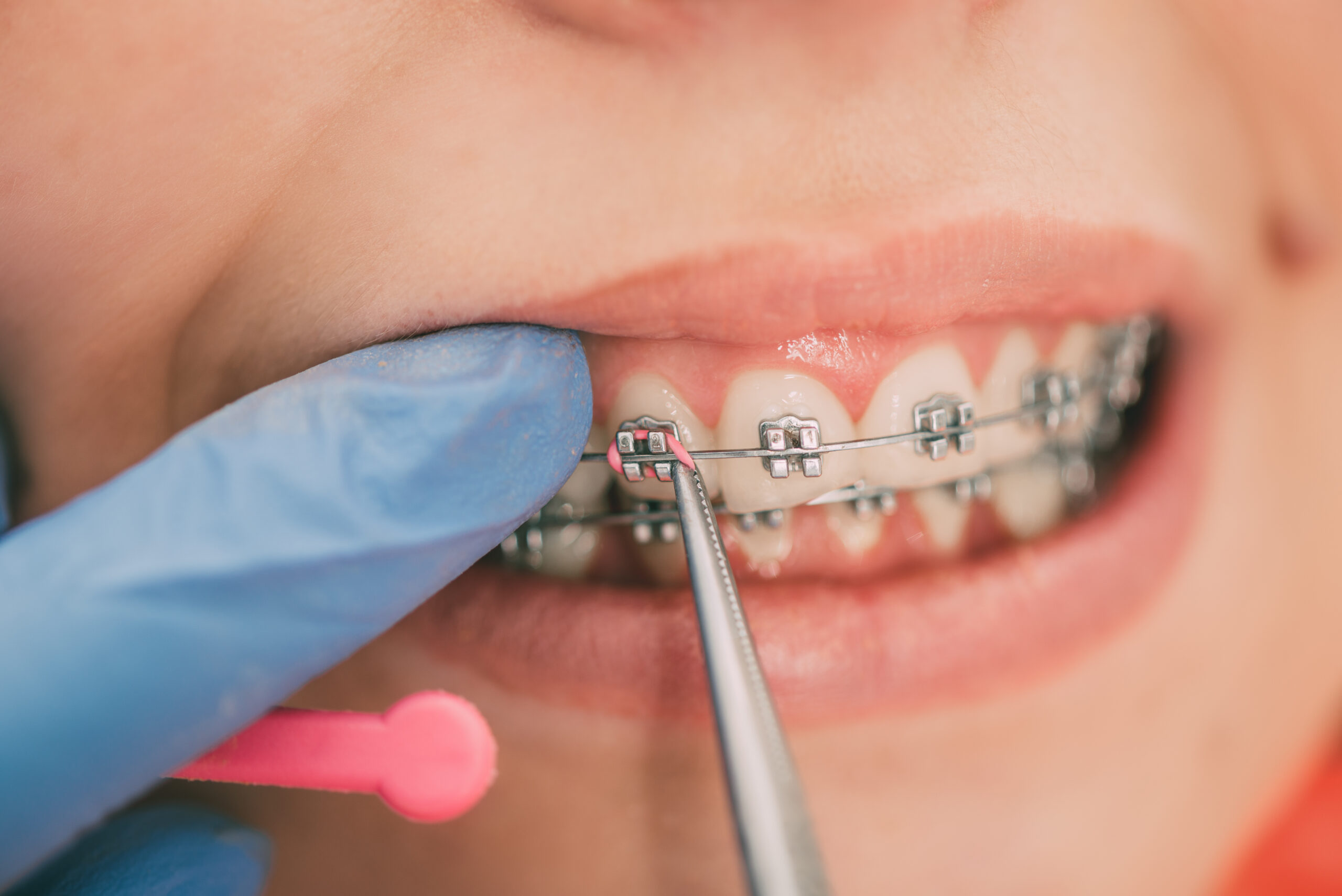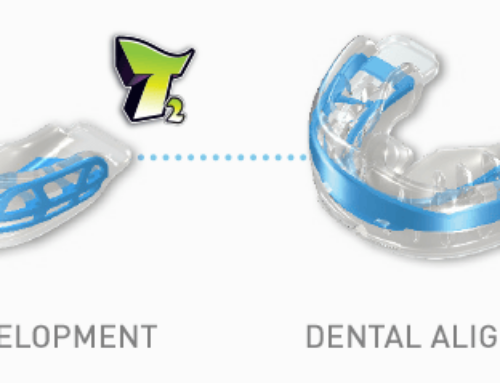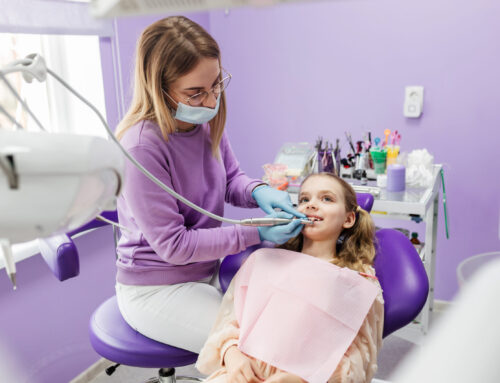Misaligned teeth and jaws are common orthodontic issues that can affect the appearance, function, and health of a person’s mouth. Misalignment, also known as malocclusion, refers to teeth that do not meet correctly when the jaws are closed. In addition to affecting the look of a smile, misaligned teeth and jaws can impact speech, breathing, chewing, and overall oral health. Understanding the causes and effects of misaligned teeth and jaws—and exploring treatment options—can help children and adults achieve healthier, more functional smiles.
What Causes Misaligned Teeth and Jaws?
While genetics play a role in jaw size and tooth alignment, environmental and lifestyle factors often contribute significantly to misalignment. Common causes of misaligned teeth and jaws include:
- Genetic Factors: Family history influences the size and shape of the jaw and teeth. Children can inherit large teeth and small jaws or other structural features that lead to crowding, spacing, or bite issues.
- Poor Oral Habits in Childhood: Oral habits like thumb sucking, prolonged bottle use, pacifier dependence, and tongue thrusting can alter jaw growth. These habits often put pressure on the teeth and jaw, leading to misalignment over time.
- Mouth Breathing: Mouth breathing, often due to allergies or nasal congestion, can impact jaw and facial development. It can result in a long, narrow face and underdeveloped jaw, leading to crowded or crooked teeth.
- Jaw Injuries or Trauma: Injuries to the jaw or teeth, especially during development, can cause teeth to shift or the jaw to heal in a misaligned position.
- Dietary Habits: A diet high in soft, processed foods can contribute to underdeveloped jaws and dental arches. Hard, fibrous foods stimulate jaw muscles and encourage natural jaw growth, which provides space for proper tooth alignment.
- Tooth Loss: When teeth are missing, adjacent teeth may shift into the empty space, leading to a misaligned bite. Tooth loss early in life, especially in children, can disrupt the eruption and alignment of permanent teeth.

Types of Malocclusion
Misalignment can affect both the teeth and jaws in various ways. Common types of malocclusion include:
- Overbite: The upper front teeth protrude significantly over the lower teeth. This type of misalignment can lead to jaw pain and wear on the lower teeth.
- Underbite: The lower front teeth extend past the upper front teeth, often due to a larger lower jaw. This can affect facial appearance and make it difficult to chew properly.
- Crossbite: In a crossbite, one or more upper teeth bite inside the lower teeth rather than outside. Crossbites can affect one side or both sides of the mouth and may lead to jaw asymmetry over time.
- Open Bite: The upper and lower teeth do not meet when the mouth is closed, often due to habits like thumb sucking or tongue thrusting. This can impact speech and make biting into foods difficult.
- Crowding: Crowded teeth occur when there is insufficient space in the jaw for all teeth to align properly. Crowding can lead to overlapping or rotated teeth and increase the risk of decay and gum disease.
- Spacing: Gaps between teeth, known as spacing, can result from missing teeth or jaws that are too large for the size of the teeth.
Consequences of Misaligned Teeth and Jaws
Misalignment isn’t just a cosmetic issue—it can have a wide range of effects on oral and overall health:
- Difficulty Chewing and Biting: Misaligned teeth and jaws can make it hard to chew food properly, which may impact digestion and lead to discomfort while eating.
- Speech Issues: Certain types of malocclusion, such as open bites or severe overbites, can interfere with speech development and articulation, making it challenging to pronounce certain sounds.
- Jaw Pain and Headaches: Misaligned jaws can place strain on the jaw joints, leading to pain, headaches, and conditions like temporomandibular joint (TMJ) disorder.
- Tooth Decay and Gum Disease: Crowded or crooked teeth are harder to clean thoroughly, increasing the risk of plaque buildup, cavities, and gum disease.
- Worn or Fractured Teeth: Misalignment can cause uneven wear on teeth, making them more prone to chips, fractures, and wear. Over time, this can compromise the teeth’s structure and strength.
- Breathing and Sleep Issues: Severe misalignment, particularly in the upper jaw, can restrict the airway, contributing to breathing problems and conditions like sleep apnea. Children with narrow jaws may have a harder time breathing through their noses and might develop mouth breathing habits, which can affect sleep quality and facial development.
Treatment Options for Misaligned Teeth and Jaws
The good news is that there are various treatments available for correcting misaligned teeth and jaws. The ideal treatment depends on the severity and type of misalignment, as well as the patient’s age and overall oral health. Common treatment options include:
- Braces: Traditional braces use metal or ceramic brackets and wires to gradually shift teeth into alignment. They are effective for correcting a wide range of alignment issues and are suitable for both children and adults.
- Clear Aligners: Clear aligners like Invisalign offer a more discreet way to straighten teeth. These removable trays are customized to fit over the teeth and gradually move them into alignment. They are effective for mild to moderate misalignment but may not be suitable for complex cases.
- Myobrace: Myobrace is a pre-orthodontic treatment designed for children that addresses poor oral habits contributing to misalignment, such as mouth breathing and incorrect tongue posture. Myobrace promotes natural jaw development, allowing teeth to come in straighter without braces or extractions.
- Palate Expanders: For children with narrow upper jaws, palate expanders can help widen the dental arch, creating more space for permanent teeth. This treatment is usually done early in life to improve jaw development and alignment.
- Orthognathic (Jaw) Surgery: In severe cases of jaw misalignment, surgery may be required to reposition the jaw. Orthognathic surgery is typically recommended for adults and addresses issues that cannot be resolved with orthodontics alone.
- Tooth Extractions: In cases of severe crowding, some teeth may be extracted to create space for others to align. This option is used selectively and is often combined with braces or aligners.
- Retainers: After completing orthodontic treatment, retainers are used to hold the teeth in their new positions. Wearing retainers consistently is crucial for preventing relapse, especially after braces or aligner treatment.
The Importance of Early Intervention
Early intervention is key to addressing misaligned teeth and jaws, particularly in children. Many alignment issues can be detected at a young age, allowing for preventive or early treatment that may reduce the need for extensive orthodontics later. Pediatric dentists and orthodontists can identify signs of jaw development issues and poor oral habits, such as mouth breathing or tongue thrusting, that may contribute to misalignment. Treatments like Myobrace or palate expanders can help guide natural jaw growth and reduce the likelihood of severe malocclusion as the child’s permanent teeth come in.
Visit Ahava Orthodontics to Correct Misaligned Teeth and Jaws
Misaligned teeth and jaws can impact much more than just the appearance of a smile. They affect speech, chewing, breathing, and oral health, making early diagnosis and treatment important. With today’s range of orthodontic options—from braces and aligners to preventive treatments like Myobrace—there are more solutions than ever to help achieve a balanced, healthy smile. At Ahava Orthodontics, we specialize in both preventive and corrective treatments to support natural, functional alignment and lifelong dental health. If you’re concerned about misalignment for you or your child, contact us for a consultation to discuss the best path to a healthier, straighter smile.




